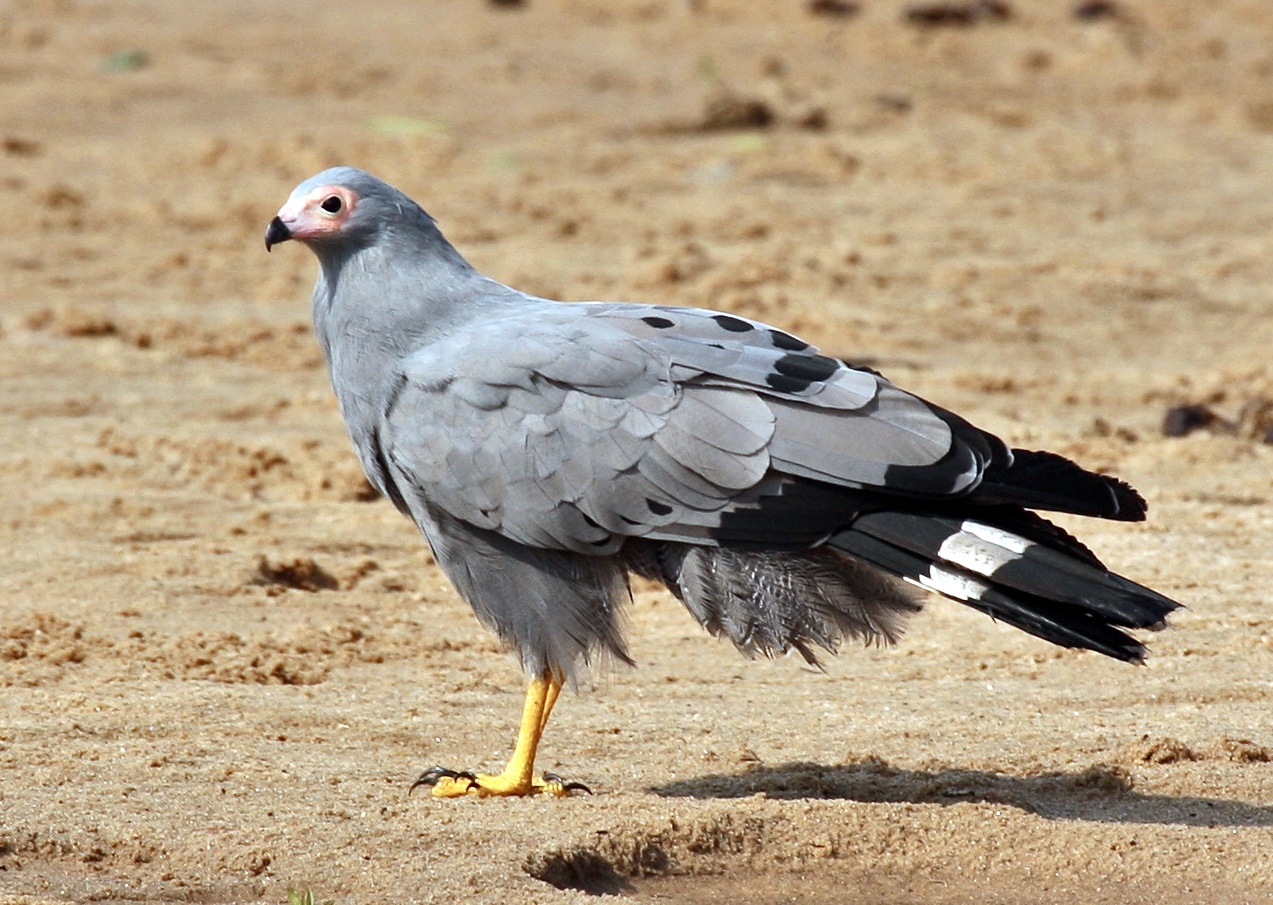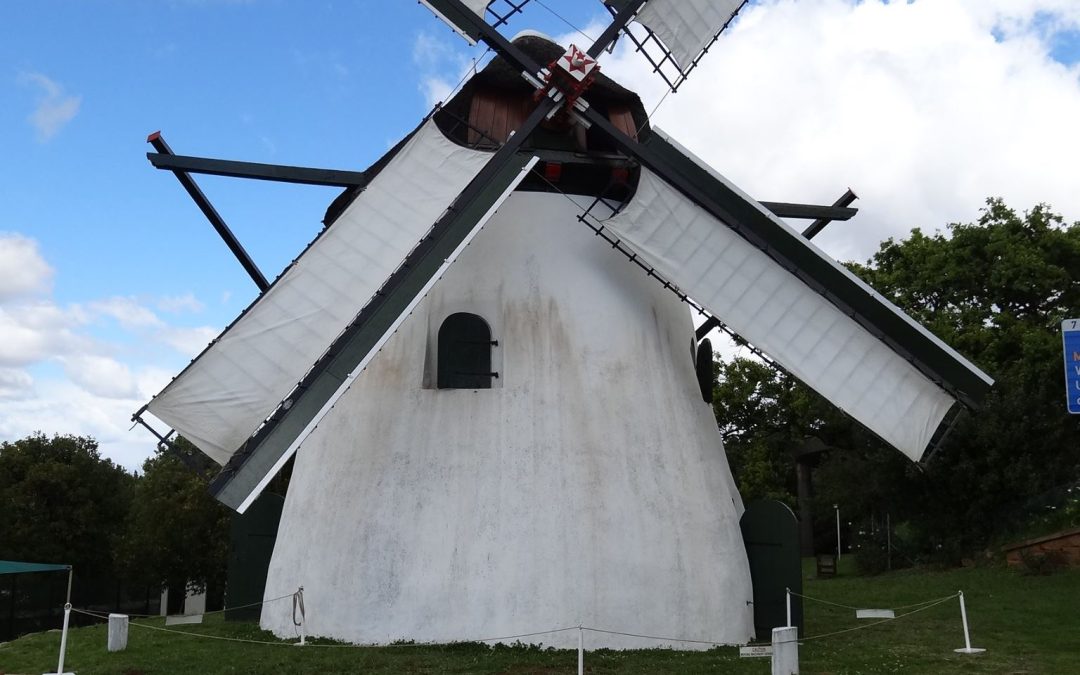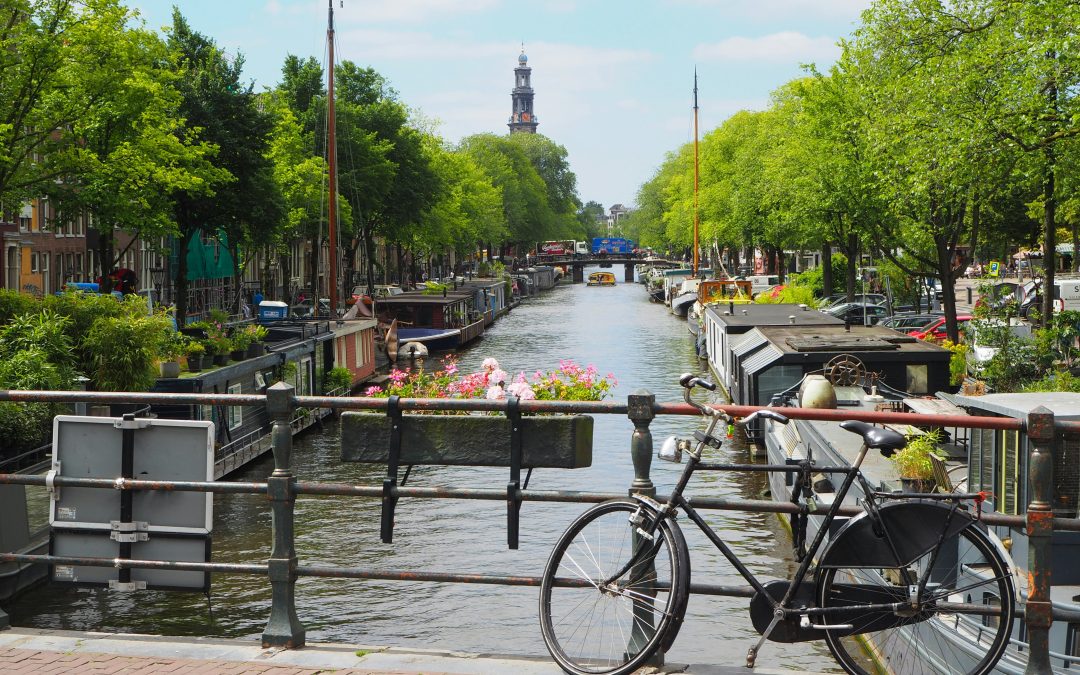By Alana Bailey
In Nature’s Corner we often use footage provided by Katie and André of Two-V Productions. This time we are publishing an essay by André. Books in their Op Vlerke series are available in Afrikaans only and can be ordered from AfriForum Uitgewers. And now for the story of the African harrier-hawk, also known as the gymnogene (Polyboroides typus) and other visitors to Eybers Street:
Every now and then we hear a gymnogene near our home. Soeee-eeee-ooo, it calls. Only a short while later we may once again hear a single soeee-eeee-ooo, but this time closer. We then peek outside, but cannot see it. We peer up into the sky, across the roofs of the houses in the hilly area where we live.
This particular kind of falcon’s back, small head and chest are light grey. It has featherless yellow facial skin and elongated neck feathers at the back of its head. Its belly is white with fine dark transverse lines. The wings are light grey with a black border surrounded by a narrow white line. The tail is black with a broad white band. The broad flapping wings with a black trailing edge are noticeable in flight.
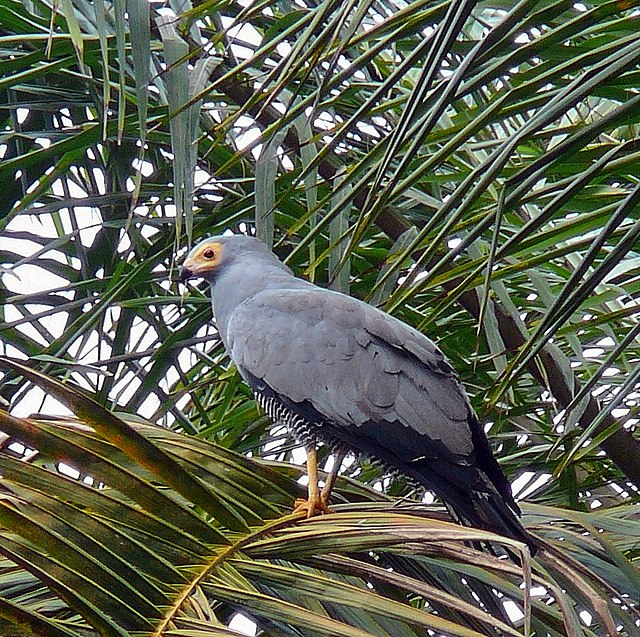
It has an extraordinary ability to climb trees with the help of its wings and long double-jointed yellow legs. Here in this arboreous area of the Lowveld, gymnogenes are quite fond of palm trees, where they seek their prey among the dry leaves at the top of the trunk, or where the branches come out of the trunk. The branches are covered at the top with pieces of intertwined remnants of old leaves that have fallen off and fibres that trail down there. The falcon has a curved sharp-pointed beak and powerful sharp-curved claws to assist it when climbing.
In the past, we have seen one sitting on the boundary wall in front of our home, where it searches for prey between bricks.
Through the years the cement has eroded and there are openings and slits in the wall where agamas hide. In summer they can often be seen sunning themselves on the wall. Sometimes one may sit on the street side of the wall, with only its blue head protruding at the top. They especially like to sit on the decoration wall next to our front porch.
Occasionally we also notice a hefty agama with its beautiful bright metallic colours sitting on the wall. He props himself up on the bricks with straight “arms” on either side of his body, his torso lifted above his front legs as he looks around, moving his head and chest up and down.
During the winter months, bronze mannikins and other birds come to this residential area to look for food. The mannikins turn up in large numbers, feasting on grass seeds. We often watch them – some jump up and down the stalks, while others peck around on the ground.
That is the time of year when we often hear the gymnogene’s call.
The laughing dove, red-eyed dove and ring-necked dove are all common here, as well as a variety of other birds.
It is quite fascinating to watch the laughing dove as it sits on a branch, puffing its feathers as it is grooming itself. At first it scratches with its beak at the top of its breast, not long after, it works down with its beak against its body. Then it raises its head, looks around quickly and again scratches with its beak in the feathers of its lower body. Next it opens a wing, pressing its head against its back, scratching there. At last it raises its head, pressing its beak under the wing at the front of its body. Then it closes the wing, sitting still for a moment before softly calling ooo-koo-koo-koo, ooo-koo-koo-koo.
We often see a common bulbul with its small dark brown crest, sitting on a branch. Sometimes one only sees the buttery yellow undertail feathers flashing by. Every now and then it flies up to an insect, makes a catch, then comes to sit on the branch again, eating its prey. Next it zips up on the branch again, chattering all the while, holding its head with the small fringe and delicate slender beak at an angle to keep an eye on its surroundings.
At certain times of the year we hear the yellow-fronted tinkerbird calling out at regular intervals: tienk, tienk, tienk, tienk. It sounds similar to the screeching mechanisms of a windmill, far in the distance.
Toé-poedelie toé-poedelie toé-poedelie, echoes the call of the black-collared barbets in a duet across the veld.
Kok-kok-kok-kok-kok, kók kók kók kók kók, calls the purple-crested turacos. If you watch carefully, the chances are good that you will see their beautiful scarlet underwings as they dart up into the branches of a tree with lightning speed with wings spread, jumping up to higher branches, until eventually flying to another tree.
Occasionally we hear oooooop oooooop, oooooop oooooop. It is the call of the grey-headed bushshrike, a shy forest dweller, visiting the backyard. We often go looking for it under the leavy canopy, but this is an impossible task, as it is a busy hunter that keeps on moving.
Recently I was sitting in the living room, watching TV, when I noticed a dark object flashing past about a meter above the ground beyond the sliding door to the left of the TV. At first I thought it was a vervet monkey, but realised that it could not be. It was certainly not a hadada ibis either, as the hadada ibis is a calm (though noisy) bird. The next moment I saw a large dark-coloured bird with broad flapping wings flying over a house across from our home, then perching on a branch of a huge tree in the backyard.
A gymnogene with its unmistakable bald yellow facial skin!
There it sat, looking around for a moment, you could see that it had something in its claw, something small. Soon it started ripping feathers off its prey before devouring it.
The lawn on the terrace in the backyard slopes up to a garden area with natural vegetation. Some distance away there is a flame of De Kaap tree. Its name refers to its flowers that have flame-coloured orchid-like petals, ranging in colour from the most beautiful pink to brick-red. Years ago we made a garden between the granite rocks where we planted aloes, a few cycads and a lot of shrubs, a whole clump of reeds, bougainvillea and ground covers.
There are also a few date palms, a mountain cabbage-tree, a coral tree, a flamboyant tree and a raasblaar (combretum). The Afrikaans name “raasblaar” refers to the sound that the tree’s leaves and seedpods make when the wind blows. The latter are mostly found in clusters and are four-winged with corrugated edges and inconspicuous scales. Sometimes they remain on the tree until the next season.
In the middle of the lawn there is a large Cape ash tree with its typical round spreading crown. In summer it bears the most beautiful little white flowers with a sweet scent that attracts insects. The fruits are enjoyed by a variety of birds. Under the tree there is a bed of bush lilies with large trumpet-shaped red flowers.
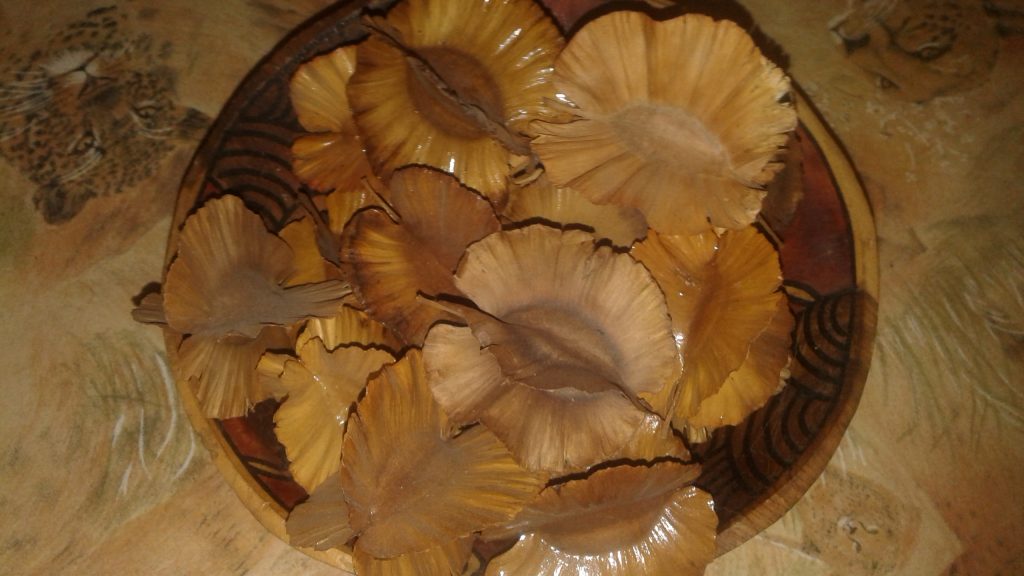
We enjoy watching small pale yellow and white butterflies flitting around in the backyard. Sometimes they are joined by others that are rust-brown with a black border around their wings, as well as by dragonflies.
Natal francolins often come down the hill at the back of the property, looking for something to eat among the vegetation surrounding the Cape ash. Kek kék-kék-kék, kek kék-kék-kék, they call.
We like to watch them grazing to the right of the Cape honeysuckle hedge with its clusters of orange trumpet-shaped flowers. In summer we also see the petals of the flowers lying on the grass where vervet monkeys dropped them after they had plucked the flowers to suck out the nectar. Birds, mostly sunbirds, also pay a visit to the hedge regularly.
A few days ago, in the late afternoon, we heard the gymnogene’s call again. Soon afterwards, Kate called me to look out at the backyard. Two Natal francolins were looking there for something to eat on the lawn – a mother and a half-grown chick. The mother was standing up straight, like a statue. She did not move, it almost looked as if she was standing on her toes, with her neck stretched upwards, her head raised, as she listened intently, alert. The chick, however, did not have a care in the world, he simply went on pecking and scratching joyfully close to his mother in an effort to find food.

